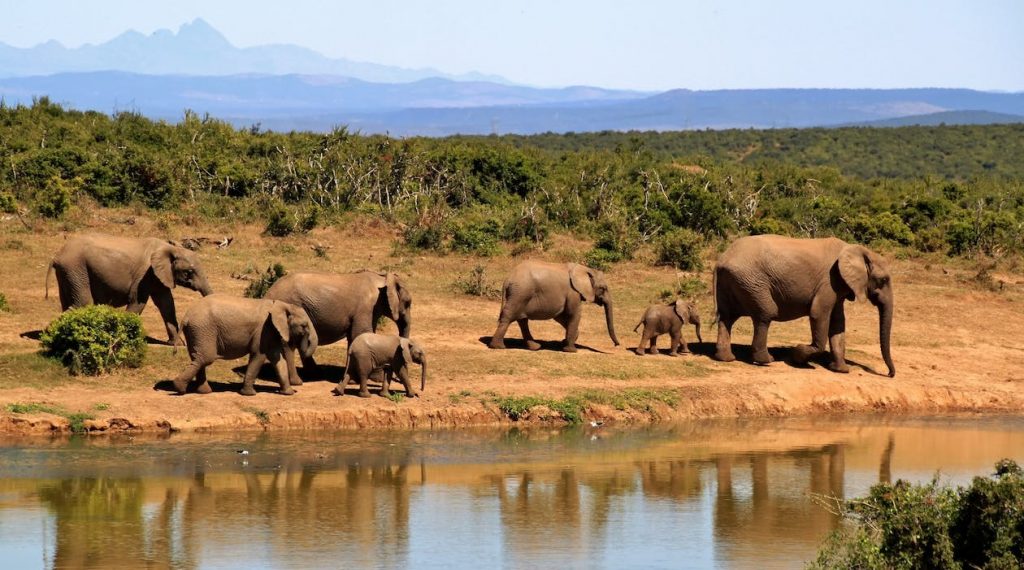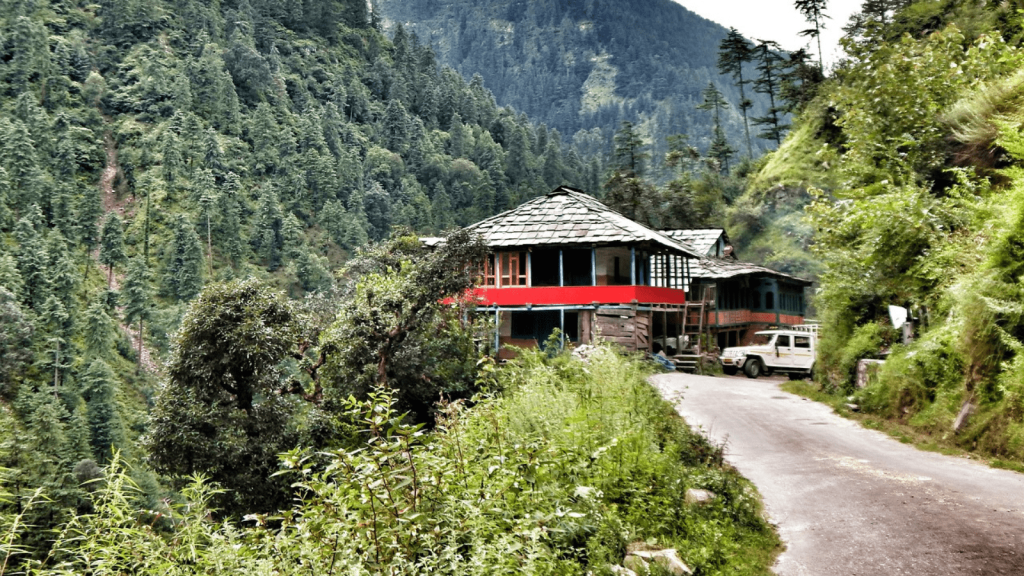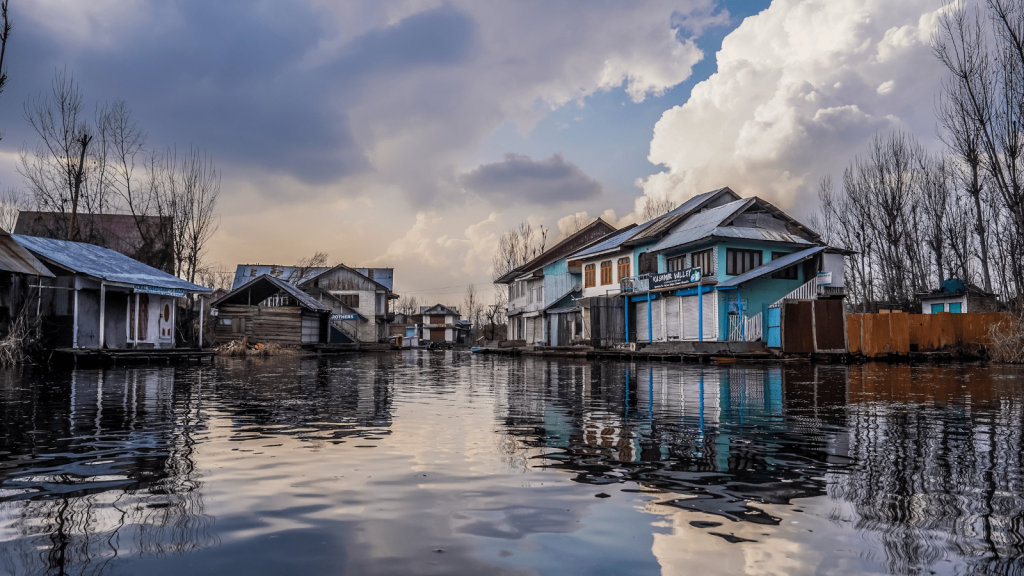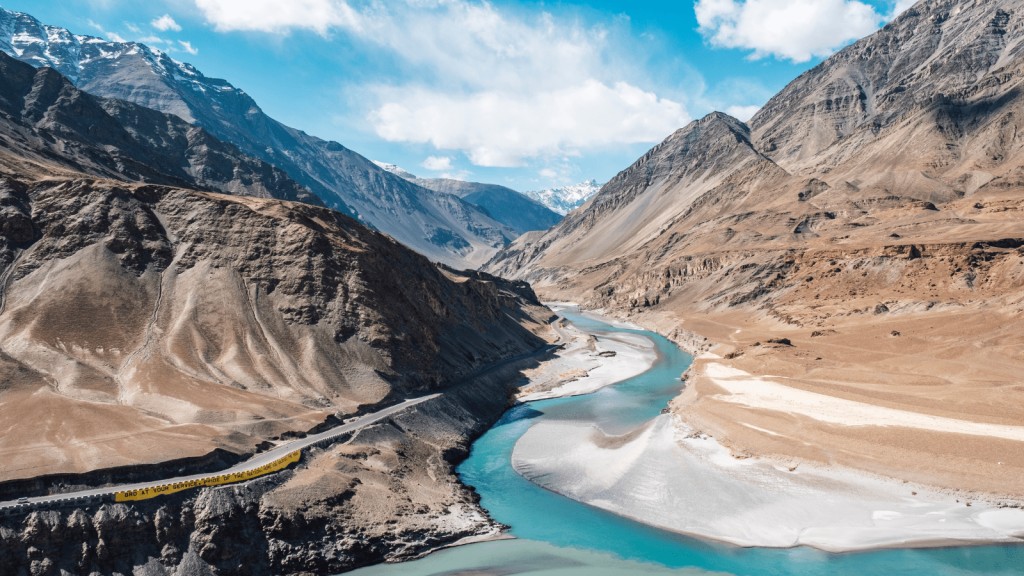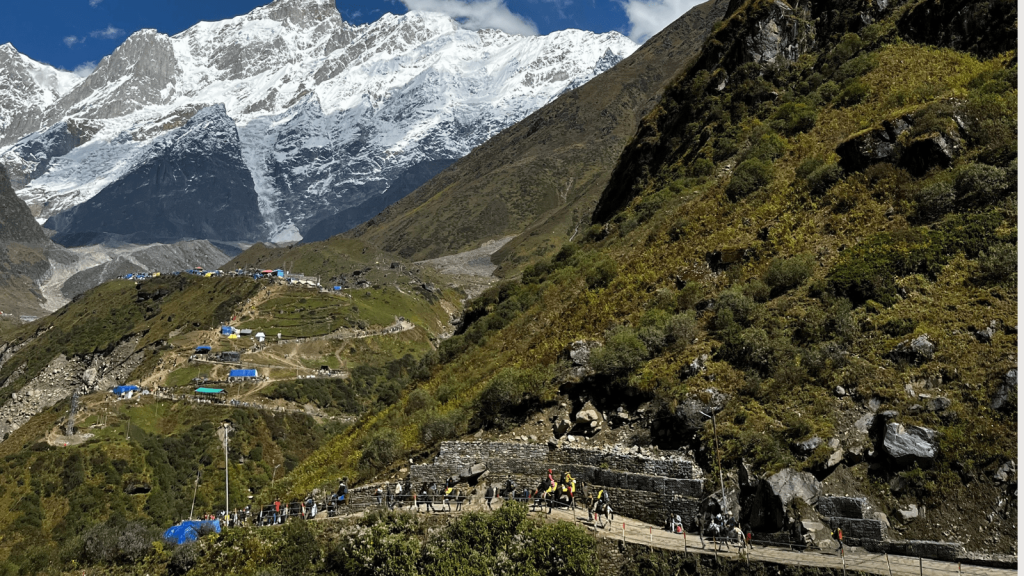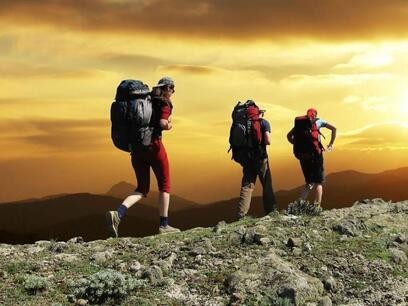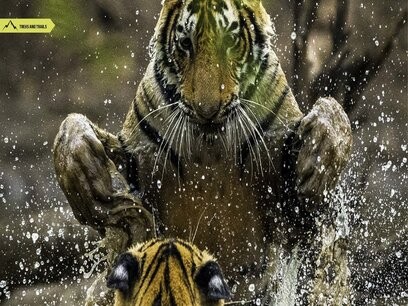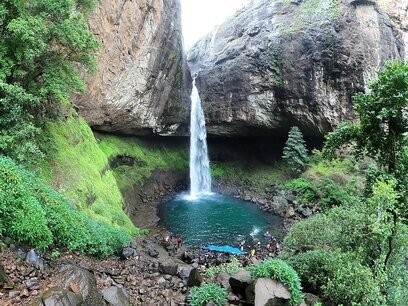Nepal's Bardia National Park is one of the country's treasures. The park is home to an array of wildlife, including tigers, rhinos, and elephants.
High mountains, middle hills, and lowlands may all be found in Nepal. In an area of 147,181 sq km, there are many different types of habitats, from the cold Himalayan highlands to the subtropical rainforests of the Terai.
A total of 34,186.62 sq km (23.39%) of the country's total land area is covered by 12 national parks, one wildlife reserve, six conservation areas, one hunting reserve, and 13 buffer zone areas in and surrounding protected regions. Nepal is the perfect location for ecotourism because of its tremendous biodiversity.
National Park of Bardia
The biggest and home to both the renowned one-horned rhinoceros of Nepal and the endangered Royal Bengal Tigers is the Bardia National Park. The National Park is in the western part of Bardia and is surrounded on three sides by the rivers Karnali and Churia. The river Babai flows right through the park.
The area is good as a home for wild animals because of its diverse topography and dense cover of sal, savannah woods, and grasslands. The park is home to 53 different kinds of mammals, more than 400 distinct bird species, and many reptiles and aquatic species.
Elephants, swamp deer, black bucks, gharial crocodiles, and marsh mugger crocodiles are among the other creatures. In the River Karnali, the Gangetic freshwater dolphin is also often seen. The Bengal florican, smaller florican, silver-eared mesia, and Saruscrane are among the endangered bird species. The park provides a unique fishing opportunity on the River Karnali and the River Babai.
- The size of Bardia National Park: 968 km2 and 507 km2 of the buffer zone
- Activities include an elephant-backed jungle safari, forest walks, boat rides, and vehicle drives.
- Accommodation: lodging in jungle lodges
- accessible in 3 hours (95 km) by car from Nepalgunj, which is 516 kilometres by road or 1 hour by air away.
- Best Time of Year: Oct.-Mar.; Apr.-Jun. (Hot, up to 42 degrees Celsius), Jul.-Sep (rainy)
- Thakurdwara is the park's main office.
Park National Chitwan
Chitwan National Park was named a UNESCO Natural Heritage Site in 1984 due to the abundance of natural beauty it has. The Park, which covers a portion of the Shivalik Hills, is covered in deciduous trees and looks out over the floodplains of the Narayani, Rapt, and Reu rivers. It has a diverse environment that is home to many different species of mammals, birds, reptiles, and aquatic creatures.
The park is home to 600 plant species, 56 animals, 539 bird species, 49 amphibian species, and reptiles. The 412 Asian one-horned rhinoceroses and the 93 Royal Bengal Tigers that reside in the deep woods of the park are the attractions. Other creatures include rhesus monkeys, langurs, deer, leopards, gaurs, wild boars, wild dogs, and wild cats that live in the same habitat as these.
Various snake species, including the python, are reptiles, and river systems are home to species like the threatened long-snouted gharial, also known as the Gangetic crocodile and marsh crocodile.
The arrival of migrating birds like parakeets, Indian pittas, and paradise flycatchers makes the forest come alive in the summer. Winter birds, on the other hand, include Siberian birds that migrate and waterfowl like Brahminy ducks, pintails, and bar-headed geese.
Woodpeckers, hornbills, peacocks, peahens, floricans, and red-headed trogons are among the other types of birds. The world's only freshwater dolphin, sometimes seen in the River Narayani, is a unique attraction of the park. The vibrant Tharu culture is another element, giving the Chitwan experience a unique touch. Devghat, Pandavnagar, Balmiki Ashram, and Kabilaspur all have significant religious and historical sites.
- Chitwan National Park has a size of 953 km2 and a buffer zone of 729.87 km2.
- Activities include an elephant-back safari through the bush, jungle walks, canoe rides, vehicle drives, and exposure to Tharu culture.
- Accommodations include lodges and resort hotels.
- Access: Bharatpur, which is 20 minutes by air or 146 kilometres by road from Kathmandu, is located 21 kilometres from the park headquarters in Kasara.
- Best Time of Year: Oct.-Mar. (Average Temperature: 25°C); Apr.-Jun. (Hot, up to 43°C); Jul.-Sep (rainy)
- Park Administration: Kasara,
Park National Khaptad
The academic and hermit travelled to western Nepal's Khaptad National Park.The park is also a rich natural ecosystem with its undulating hills of grasslands and forests of subtropical, temperate, and sub-alpine flora.
With 270 kinds of birds and 224 medicinal plants, the park is a great place to go bird-watching. Common bird species include several types of impheyan pheasant, partridges, flycatchers, bulbuls, cuckoos, and eagles. Barking deer, wild boar, ghoral, Himalayan black bears, yellow-throated martens, rhesus monkeys, and langur monkeys are among the animals found in the park.
Additionally, the park provides its corporate offices with religious sightseeing tours in Tribeni. This region is surrounded by a number of ancient temples, and every Jestha Purnima, a festival of Ganga Dashhara is celebrated here.
Sahashra Linga, the highest peak in the park at 3,200 m, is another place of worship. Ganesh Temple, Nagdhunga, and Kedardhunga are a few other places of worship in the park.
These locales are excellent for practising meditation. There is a festival in August and September at Khaptad Lake, which is northeast of the park.
- Buffer Zone with Khaptad National Park's 225 km2 Size (216 km2)
- Activities: Trekking
- Accommodation: camping
- Access: Fly from Kathmandu to Nepalgunj for 60 minutes, then for 20 minutes to Chainpur (Bajhang). The option is to fly from Kathmandu to Dhangadi, or a three-day hike (1 hr. ten min.) 670 kilometres via car, followed by a ten-hour trip to Silgadi and a one-day walk.
- Best Season: Mar-May and Oct-Nov (10-20 degrees Celsius); Jun-Sep is the best months (rainy). Dec-Feb (snow) (snow)
- Park Administration: Khaptad
Langtang Park National
Parts of the Nuwakot, Rasuwa terrain along the Nepal-China (Tibet) border are covered by the park. The Langtang mountain in the north and many lakes in the south are this park's main attractions. Langtang is a popular tourist destination because of the Himalayan peaks, gorgeous lakes, high-altitude rainforests with a variety of plants and animals, and scenic greenery.
A total of 25% of the park's territory is covered in forest, with subtropical woods at lower elevations (less than 1,000 m) giving way to alpine scrubs and grasslands as you ascend. Wild dogs, red pandas, pikas, muntjacs, musk deer, Himalayan black bears, Himalayan tahrs, ghorals, serows, rhesus monkeys, common langurs, and snow leopards are just a few of the animals that may be found here. Tragopan and impeyan pheasants are two of the 373 bird species that are often observed here.
Another notable feature of the Langtang Valley is the revered Lake Gosainkunda. Every year, thousands of Hindu pilgrims go to the lake region, particularly around the time of the August Janai Purnima festival.
- Langtang National Park has a core area of 1710 km2 and a buffer zone of 420 km2.
- Activities include hiking, climbing, and experiencing Tamang culture.
- Hotel and camping accommodations
- Accessible from Dhunche, 117 kilometres away from Kathmandu via car,
- Best months to visit: October-November and March-May (cold at higher elevations), June-September (monsoon), and December-February (snow).
- Park Administration: Dhunche
National Park of Makalu Barun
Northeastern Nepal's Sankhuwasabha and Solukhumbu districts are covered by the park. Experiencing the rare Himalayan biodiversity is one of the park's main draws for tourists. As the altitude goes up, subtropical forests give way to subalpine and alpine regions.
The park is home to 86 kinds of fodder trees, 25 of Nepal's 30 types of rhododendron, 19 species of bamboo, 15 species of oak, 48 species of primrose, and 48 species of orchids. With 400 different bird species, including the uncommon spotted wren babbler and the olive ground warbler, the park also provides possibilities for bird viewing. The endangered red panda, snow leopard, Himalayan black bear, clouded leopard, ghoral, tahr, wild boar, barking deer, Himalayan marmot, weasel, langur monkey, and serrow are among the wildlife that may be found there. There are 84 different types of fish in the River Arun, which runs through the park, including salmon.
- Makalu Barun National Park has a 1.500 km2 core area and an 830 km2 buffer zone.
- Activities: climbing and trekking
- Accommodation: camping
- Access: After a 40-minute flight from Kathmandu to Tumlingtar, do a six-day hike.
- Best months to visit: October-November and March-April; April-May (heated at lower altitudes), June-September (monsoon).
- Seduwa is the park's main office; phone: 029-560136
Parsa National Park
The Parsa National Park covers a portion of the tropical and subtropical vegetation, with the hills being covered with chir pine and predominantly by sal woods. Along the water locations, khair, sissoo, and silk cotton are present.
Wild elephants, tigers, leopards, sloth bears, blue bulls, and wild dogs all have suitable habitats in the reserve. Sambar, chital, hog deer, barking deer, langur monkeys, rhesus macaques, striped hyenas, rats, palm civets, and jungle cats are among the prevalent creatures in the reserve.
The reserve is home to 370 different bird species, including the critically endangered Great Hornbill, which may be found in certain areas of the woodland. Peafowl, red jungle fowl, flycatchers, and woodpeckers are some more kinds of birds. The reserve is home to a variety of snakes, including the king cobra, common cobra, krait, rat snake, and python, in addition to birds and other wildlife.
- The core area of Parsa National Park is 627.39 km2, while the buffer zone is 285.30 km2.
- Activities include an elephant-backed jungle safari, forest walks, and vehicle drives.
- Accessibility: From Kathmandu, take a 15-minute flight to Simara, then take a 7-kilometer drive to the reserve headquarters (150 km via Hetauda).
- The best months are from October to March; the warmest months are from April to June (30-35 degrees Celsius) and from July to September (monsoon).
- Adhabar, the reserve headquarters
National Park in Rara
A typical sampling of the area's flora and fauna may be found at the Rara National Park in the extreme northwest of the nation. The largest lake in the nation, Lake Rara, from which the park derives its name, sits in the centre of the park, which is dispersed throughout the Mugu and Jumla regions.
In certain locations, the lake's depth reaches 167 metres, and it empties into the River Mugu Karnali through Niar Khola. While blue pine predominates in the region surrounding the lake, the park is mostly covered with coniferous forest. Around 3,000 meters, you might see rhododendron, juniper, spruce, oak, or cypress. Pine, spruce, and fir are more common higher up.
Red pandas, musk deer, Himalayan black bears, leopards, jackals, Himalayan tahrs, wild yellow-throated martins, wild dogs, wild boars, common langurs, rhesus macaques, and common otters all call the park's lush greenery home. The park is home to 272 different species of birds throughout the winter, including coots, great-crested grebes, black-necked grebes, red-crested pochards, mallards, common teal, mergansers, and gulls. During some seasons, migrant waterfowl and gallinaceous birds may also be sighted. So far, three different species of snow trout have been identified as aquatic life in the lake so far.
- The core area of Parsa National Park is 106 km2, while the buffer zone is 198 km2.
- Exercise: trekking
- A place to stay: a campground or lodge
- accessible through flights from Kathmandu to Nepalgunj that take an hour and 35 minutes, respectively, and a two-hour hike to Rara Lake.
- The best months are February through April and October through November.
- Park Administration: Hutu
Park National Sagarmatha
In 1979, the Sagarmatha National Park's main draw was included on the list of World Heritage Sites. The park features a number of additional notable peaks, most of which are over 6,000 metres and are located in the Himalayan biological zone. Sagarmatha is comprised of difficult terrain with deep gorges, glaciers, and enormous boulders, with the majority of the park being over 3,000 metres.
The park provides a mix of natural and cultural tourism goods because of its distinctive Himalayan landscape. At lower elevations, pine and hemlock woods are more common, while juniper, silver, birch, rhododendron, and birch trees are more common above 3,500 m.
Rhododendron blossoms come in many types throughout the spring and monsoon seasons. Himalayan Tahr, ghoral, musk deer, and Pikka (mouse hare) weasels are among of the most prevalent animals in the park. The Himalayan black bear, wolf, lynx, and snow leopard are other seldom seen creatures.
The park is home to more than 193 different kinds of birds. They include the Himalayan griffon, the lammergeyer, the red-billed chough, the yellow-billed chough, the snow cock, and the impevan pheasant (Danphe).
The National Park shows cultural achievements with its many monasteries and cultural sites, as well as the wonderful friendliness of the Sherpas.
- The main part of Sagarmatha National Park is 1148 km2, and the area around it is 275 km2.
- Activities include hiking, climbing, and learning about Sherpa culture.
- Accommodations include resort inns, cabins, and camping.
- Fly to Lukla, which is reachable from Kathmandu in 30 minutes, to get access.
- -Nov. and Mar.-May are the best months to visit; Dec.-Feb. (snow, daytime high of 5 degrees Celsius), Jun.-Sep (rainy)
- Park Administration: Namche Bazaar and Mendalphu
National Park of Shey-Phoksundo
The largest national park in Nepal is home to Shey-Phoksundo National Park. The Park, which spans the Dolpa and Mugu districts and has a varied topography and height difference, is home to a wide variety of species and plants.
The Himalayan peaks in the north and Lake Phoksundo in the south are the park's main geographical features. In the lower altitudes, there is pine, walnut, willow, oak, and cypress vegetation; in the higher altitudes, there is pine, spruce, juniper, and birch. The areas higher up are mostly dry and have grass and alpine meadows, but not many trees. In the alpine areas, there are berberis, wild roses, and caragana.
There are 286 plant species of botanical significance in the park. Sheep, ghoral, musk deer, leopards, wild dogs, marmots, weasels, mouse hares, rhesus and langur monkeys, Himalayan tahr, Himalayan black bears, and jackals are among the creatures that may be found in the region. The uncommon and threatened snow leopard may be spotted in the higher areas. The park is home to over 200 different bird species, including the yellow-throated marten, Tibetan partridge, wood snipe, white-throated tit, wood accentor, and crimson-eared rose sparrow.
Impeyan, cheer pheasant, chough, ravens, Tibetan snow cock, Tibetan twit, brown dipper, Himalayan griffon, and Lammergeyer. In addition to these, the park is home to 29 different butterfly species and 6 different reptile species.
- The main part of Shey-Phoksundo National Park is 3,555 km2, and the area around it is 1,349 km2.
- Activities: climbing and trekking
- Accommodation: Access to camping is through a 20-minute flight from Nepalguni to Dolpa's Jugal airfield, followed by a three-day hike.
- Mar-May and Sep-Oct are the best months.
- Park Administration: Sumduwa
The National Park of Shivapuri Nagarjun
The Shivapuri Nagarjun Park, a popular destination for trekking, hiking, and relaxation, was created as a watershed and wildlife reserve in 1976 and then designated a national park in 2002 to preserve its flora and wildlife.
129 different kinds of mushrooms and 19 different species of mammals, including the Himalayan black bear, the leopard, the barking deer, the wild boar, the wildcat, the rhesus monkey, and the langur monkey, are among the park's plant and animal diversity. The park is also home to 102 species of butterflies and 177 kinds of birds.
- Shivapuri Nagarjun National Park measures 159 sq km2 in its core and 118.6 sq km2 in its buffer zone.
- Activities: rock climbing, hiking, and bird viewing.
- Accommodation: lodges
- Access: Drive (11 km) to Buddhanilkantha Temple in Kathmandu's downtown area, then hike there.
- Best time of year: September to May; June to August (rainy).
- Park Administration: Shivapuri
National Park of Shuklaphanta
The second-largest wildlife reserve in the Terai region of Nepal, Shuklaphanta National Park, is situated in the far-subtropical forest. The park's broad grasslands and many waterholes expand into a huge area of plain grasslands and sal woods, and around rivers and lakes, marsh vegetation may be found.
To safeguard swamp deer, the reserve—originally a hunting area—was eventually transformed into a wildlife reserve. Nearly 2,000 swamp deer, about 50 wild elephants, and 16 tigers are now housed at these facilities. Spotted deer, blue bulls, barking deer, hog deer, wild boars, leopards, jackals, langurs, and rhesus monkeys are among the other creatures that may be found in this area. The Sarus crane, swamp francolin, grass owl, warblers, flycatchers, and endangered Bengal florican are among the bird species that can be found in the reserve. The crocodile, cobra, python, and marsh mugger are examples of reptile species.
- The core area of Shuklaphanta National Park is 305 km2, whereas the buffer zone is 243.5 km2.
- Activities: Elephant-back safaris to observe wildlife
- Accommodation: lodging in jungle lodges
- Accessible by flight or a 1-hour 10-minute drive to Dhangadi (670 km from Kathmandu), followed by a 1-hour 30-minute drive (60 km).
- Best time of year: October to March; April to June (hot, up to 42 degrees Celsius); July to September (rainy).
- Reserve Headquarters: Kanchanpur and Malegaon
Koshitappu Reserve for Wildlife
Koshi Tappu Wildlife Reserve has established a reputation as a haven for bird watchers. The reserve encompasses the eastern districts of Saptari and Sunsari. Nepal over the Koshi River's barriers. Since 1987, the reserve has been designated as a wetland site.
The majority of the reserve's vegetation is grassland, with some scrub and deciduous riverine woods in isolated areas. The reserve includes records of 479 different bird species, some of which migrate to Siberia in the winter.
On the riverbanks, a variety of ducks, herons, storks, egrets, and ibis may be observed. Additionally, Koshi Tappu Wildlife Reserve is home to one of Asia's few elephant stables. Wild buffalo, wild boar, hog deer, spotted deer, blue bulls, and jackals are among the other creatures that may be seen here. Here you may also find Gangetic dolphins and Gharial crocodiles.
- The core area of the Koshitappu Wildlife Reserve is 175 km2, and the area around it, called the buffer zone, is 173 km2.
- Activities include seeing wildlife and birds.
- Accommodations include hotels and tented camps.
- Accessible through a 90-minute (40 mile) trip from Biratnagar, which is 500 kilometres by road or 50 minutes by air from Kathmandu,
- Best Time of Year: October-March; April-June (hot), July-September (rainy).
- Reserve Command: Kusaha
A hunting reserve in Dhorpatan
In West Nepal, right below the Dhaulagiri mountain, the only portion of the reserve that borders the districts of Myagdi and Baglung is the Dhorpatan Hunting Reserve.
The reserve is located between 3,000 and 7,000 metres above sea level.
In the reserve, you may see trees like fir, pine, birch, rhododendron, hemlock, oak, juniper, and spruce. Blue sheep, which are plentiful in the region, are one of the main draws for hunters.
Pheasants and partridges are also available to hunters in sufficient quantities for shooting. The Himalayan tahr, Himalayan black bear, barking deer, wild boar, rhesus monkey, langur, and mouse hare are among the other creatures that may be found in this area. The musk deer, wolf, red panda, cheer pheasant, and Danphe are among the reserve's endangered species.
- The core area of the Dhorpatan Hunting Reserve is 1325 km2.
- Trophy hunting and game watching are activities.
- Camping as lodging
- Access: Baglung, 72 kilometres by road from Pokhara, is reachable after four days of walking.
- Mar-Apr, Oct-Nov; Jul-Sep (monsoon), and Dec-Feb are the best months to visit (cold, windy, snow).
- Office location: Dhorpatan
Annapurna National Park
One of the world's top hiking routes is found in the Annapurna Conservation Area. The region encompasses central Nepal's Kaski, Mustang, Manang, and Laming districts. Starting at a height of 790 metres, the region rises to Mount Annapurna's 8,091 metres.
The first experience is at Ghandruk, and Ghorepani offers a stunning panoramic view of the Annapurna peaks. The hills of rhododendron that bloom each spring are very stunning. Jomsom is where the Annapurna Circuit turns. From Jomsom, a journey southeast brings hikers to the 4,919 m-high, picturesque Tilicho Lake region. The renowned Hindu pilgrimage destination, Muktinath Temple, is located along the circular route.
A variety of orchid and rhododendron species may be found among the local flora. There are 102 different types of animals in the wildlife, including rare, endangered snow leopards and a healthy blue sheep population. Around 474 different bird species, including koalas, blood pheasants, and multicoloured impeyan, are also found in the area. The area is also home to 22 species of amphibians and 39 species of reptiles.
- The Annapurna Conservation Area is 7,629 km2 in size.
- Activities: mountaineering and trekking
- Accommodations include resort inns, cabins, and camping.
- accessible from Pokhara, which is 202 kilometres away from Kathmandu by land and 30 minutes away by air.
- Mar-May and Sep-Nov are the ideal months.
- ACAP's main office is at Hariyo Kharka, Pokhara.
Kanchenjunga National Park
The Kanchenjunga Conservation Area is located in northeastern Nepal in the Taplejung district. It is bordered to the north by Tibet, China, to the east by Sikkim, India, and to the west by the Sankhuwasabha district.
There are low river basins with temperate and subtropical woods, as well as alpine meadows. Ten of Nepal's 20 native gymnosperm species and 15 of its 23 endemic flowering plant species are found in this area.
In addition, there are 48 different types of orchids and about 30 different rhododendron species here. Snow leopards, Himalayan black bears, musk deer, red pandas, blue sheep, and rhesus monkeys are among the endangered species of wildlife. There are around 252 different bird species in the region, including shy drongos, impheyan pheasants, and red-billed blue magpies.
- 2,035 km2 make up the Kanchenjunga Conservation Core Area.
- Activities: climbing and trekking
- Accommodations include teahouses and campsites.
- Fly from Kathmandu to Taplejung via Biratnagar.
- March through May and September through November are the best months to visit parks. Administration: Lelep
Manaslu National Park
The Gorkha district's Manaslu region is a traditional location to see untainted mountain culture and the environment. The protected area is 600 metres in height and is capped by Mt. Manaslu, the eighth-highest peak in the world at 8,163 metres. 33 different kinds of animals live in the area, including the snow leopard, musk deer, and Himalayan tahr.
There are three species of reptiles; over 1,500–2,000 types of flowering plants; over 110 species of birds; and over 110 species of birds.
- 1,663 km2 make up the Manaslu Conservation Core Area.
- Activities: climbing and trekking
- Facilities: campgrounds and lodges
- Access: Take a bus to Besi Sahar (106 km from Pokhara) or Dhading (87 km from Kathmandu), and then go hiking.
- Mar-May and Sep-Nov are the ideal months.
- Park Administration: Prok
National Park of Banke
The Banke district comprises the whole core region of the park, while the Dang and Salyan districts make up the southern and western portions of the buffer zone. Banke National Park (BNP) became the country's tenth park in July 2010. This shows that the government is committed to protecting biodiversity at the landscape level.
In 1998, it was designated as a "Gift to the Earth. The Suhelwa Wildlife Sanctuary in India is connected to the park through a transboundary landscape. In the west, it connects with Bardia National Park (BNP).
Eight different ecosystem types can be found in the BNP, including the Sal forest, the deciduous Riverine forest, the savannahs and grasslands, the mixed hardwood forest, the flood plain community, the Bhabar, and the foothills of the Chure mountain. More than 300 bird species, 124 plant species, 34 mammals, 7 amphibians, and 58 fish species all call it home. Sal, Karma, Khair, and Sissoo make up the majority of the 90% of natural forest cover.
The National Parks and Wildlife Conservation Act of 1973 protects two species of reptiles (gharial crocodile and python), four species of birds (giant hornbill, black stork, Bengal florican, and lesser florican), three species of mammals (tiger, striped hyena, and four-horned antelope), and three species of mammals (tiger, striped hyena, and four-horned antelope) The lifeblood of the park is formed by the Babai River in the north and the Rapti River in the south.
In the buffer zone zones, there are around 4,861 houses and 35,712 people. In the buffer zone regions, there are indigenous Tharu communities as well as Brahmin, Chhetri, Magar, Tamang, Majhi, and Gurung people.
- Banke National Park spans an area of 343 km2 in the buffer zone and 550 km2 in the core.
- Activities include a jeep trip, a boat cruise, and a jungle safari.
- Accommodations are offered on a number of sites, including the southern boundary of the park.
- Accessibility: 516 kilometres by road from Kathmandu, an hour's drive from Nepalgunj, or an hour's flight. Mahendranagar and Dhangadi are both linked to Kathmandu by plane and need a 7-8-hour drive.
The best time to visit is between October and April, when the weather is dry, mild, and comfortable at night. From April to June, temperatures may reach up to 45°C. Rains from the monsoon season, which runs until September, replace the hot, muggy days.
Additional Conservation Areas
Nampa Conservation Area: Located in the Darchula District, it covers an area of 1903 square kilometres and has 21 village development committees. The region is home to Himalayan Black Bears, Gorals, Musk Deer, Clouded Leopards, and Tahr.
Blackbuck Conservation Area is located in the Bardia district. This is the initial formal initiative to protect the imperilled Blackbuck (Antelope cervicapra). The area is 16.95 square kilometers.
The Gaurishankar Conservation Area is made up of three districts with the headquarters in Charikot: Ramechhap, Dolakha, and Sindhupalchwok. It also includes the Sagarmatha National Park and Buffer Zone in the east, Langtang National Park and Buffer Zone in the west, and the Tibet Autonomous Region of China in the north.
Information Management Systems for Trekkers (TIMS)
Before beginning their walk, hikers must get a Trekkers' Information Management Systems (TIMS) Card. In order to stop illegal hiking and make sure hikers are safe and protected in the most popular hiking spots, TIMS Cards are now required.
For the protection of visitors, TIMS Card assists in storing the trekkers' database that tracks their potential locations. The Tourist Service Center, Bhrikutimandap, the Trekking Agencies Association of Nepal (TAAN) Office in Maligaon, and government-registered trekking firms in Kathmandu and Pokhara are where you may get a TIMS Card.
Each tourist who engages in trekking via a business is required to pay US$10, and each free individual trekker (FIT) is required to pay US$20 for each trekking route they take and for each entry they make, both in equal Nepali Rupees only. A portion of the funds raised will be used to keep the trekkers' database current and to rescue hikers who need emergency assistance.
Permit for Trekking in Restricted Areas
- Permission to hike in locations that fall within the restricted zone must be obtained from the Department of Immigration, Kalikasthan, Kathmandu.
- Trekking outside of the designated area is illegal and is prohibited along all routes.
- A hiking permit must be carried by the hiker at all times.
- Tourist visas must be presented to immigration officials or law enforcement officials as needed.

